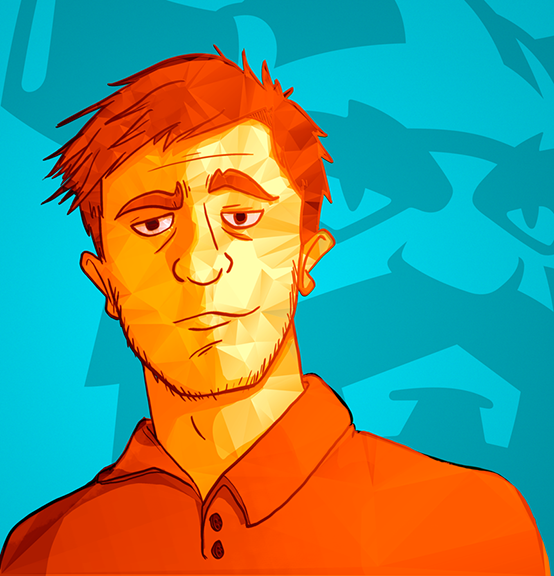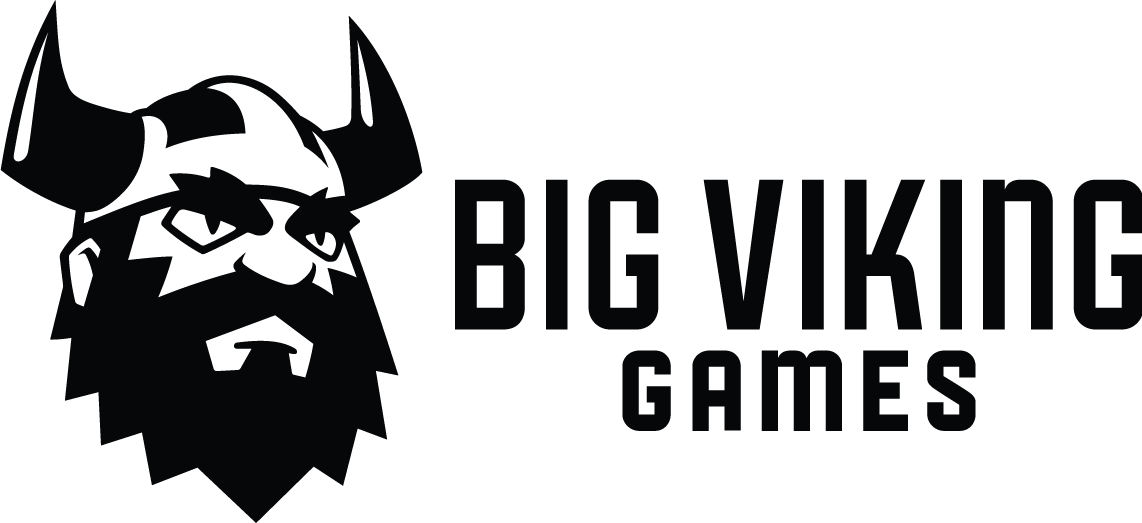There is a fierce demand for game designers in the gaming industry, but most people are unsure of what, exactly, a game design job entails. To help us better understand this essential role, we sat down with our very talented game designer, Stojan. In this Viking Profile, Stojan shares how he got into game design, what makes a well-designed game, and how aspiring game designers can break into the field.

Q: What is your role at Big Viking Games, and how long have you been with the company?
Stojan: I was hired by BVG as a game designer in February of 2013, so I’ve been with the company for nearly four years now.
“Game Designer” can tend to be a misunderstood role. What does a game designer do?
Stojan: The short answer? A game designer is somebody that creates an experience that succeeds in maintaining the interest of a player for as long as possible, using various game design conventions.
The longer answer is that a Game Designer is the one who is responsible for a game’s core loop and builds out detailed specifications for features in the game. Depending on the type of game, this specification could include an overview of what the effect of certain features will be (short and long term), the proper math, the proper economy balance and impact, and the necessary high-level user experience flows.
The designer also has to verify any features before they are rolled out by ensuring that any new features are consistent with the game’s existing design. And, of course, a successful game designer needs to stay on top of the current trends in game design, particularly Free to Play trends.
How did you decide you wanted to be a game designer?
Stojan: For me, it was a kind of evolution of always wanting more. I’ve been into math since I was a kid, and I used to participate in math competitions. Eventually I got bored of them and started feeling like I wanted a different kind of challenge. That lead me to get into 3D art, which was a completely different path and kept me happy for a while. However, I then started thinking about how the 3D art I was creating was very static, and how the art would be more interesting if there was some way to interact with it. That desire for interactivity naturally lead me to start thinking about game design.
How did you start your career as a game designer?
Stojan: In college, I took a degree in computer science and electrical engineering, but at that point I was still determined to pursue a career in 3D modeling and animation. When I graduated, I applied to a Dutch game company for a position as a 3D artist, but they instead offered me a job as a game designer. I remember them telling me “You’re not a 3D artist. You’re actually a game designer. You should be a game designer!” It was confusing at the time, but it turned out that they saw my potential better than I was able to.
Now that you’re a game designer, which do you use more: your technical skills from your engineering degree, or your artistic talents as a 3D designer?
Stojan: I’d say I use both. Because of my technical background, I can easily create prototypes of my own ideas. And because I had some artistic experience, I can use that to present my ideas in a visually appealing way.
Do you think that’s what you need to be a successful Game Designer? A foot in both the technical and artistic camps?
Stojan: I strongly believe that you need some technical expertise to be a game designer. You don’t necessarily need a computer science degree, but more like an engineering way of thinking. You need to be driven to go deeper and see the underlying principles and mechanisms behind a design, and how that all contributes to a really cohesive product.
When trying to analyze a game, most people get hung up looking at the surface level. If we were to compare it to a watch, they’re only looking at the watch face. And that surface level—the watch’s face—seems simple enough. However, if you look deeper, beyond the watch face, you find a collection of complicated mechanisms. It’s these hidden, complex mechanisms that make the watch work, not the face.
Relating this example back to games, a successful game designer needs to be able to understand both the surface, player-facing parts of a game (this is the watch’s face in our example), and the underlying mechanisms that drive the game (the watch’s gears). Artists create the player experience (the watch’s face), and technical people work on the interactivity of the experience (the watch’s gears). A Game Designer straddles this divide, working on both these parts of the game at once.
Despite the game designer working with this team of artists and technical people on a game, it can still feel like a very independent discipline.
What types of games do you see as being most popular right now?
Stojan: In the free to play market, the games that keep dominating the market are organized into some hyper-focused sub-genres, which didn’t really exist 5-10 years ago. Game of War, for example, has turned into a complete sub-genre on its own, with many clones on the market. Similarly, the match-3 puzzle games (like Candy Crush and Cookie Jam) have become their own sub-genre, and dozens of studios are trying to further innovate within that sub-genre. Each of these sub-genres creates its own conventions and best practices: defining what you can and can’t do in this type of game.
Now that you’re in this industry, and you spend your days designing games, has your opinion shifted about games and their value in people’s lives?
Stojan: I really started valuing the free to play genre when I started working at Big Viking Games. I saw that a lot of thought goes into free to play. For example, a well designed free to play game will take into account the life needs of players: their need to sleep, to eat, to work. These games allow you to play something meaningful in short bursts, without having to neglect your life in the real world.
Do you have an example of a game that has a good mechanic that lets you live your life while also enjoying the game?
Stojan: Clash Royale is probably the best example I’ve played. Every design decisions they made was based on the understanding that the person who played the game would also have a life of their own outside the game. They should be able to work and sleep without ever losing their progress in the game.
How do you decide if a game has been well designed?
Stojan: There is one question I ask when evaluating a game’s design decision: Is my next action in the game a no-brainer? Basically, is the inherent value proposition in every decision so positive that it actually inspires me to keep returning to the game?
In Clash Royale, for example, the reason you come back to the game is to open a chest. It doesn’t make sense for you not to come back to the game for five seconds, open a chest, and schedule the next one while you’re at work, or waiting in line.
And, by scheduling chests in this way, you never fall behind. The value in the action is so clear that it makes the action a no brainer. The player starts off with obvious choices, that have obvious benefit, and these obvious choices pull you into the larger spider web of the game.
Does your analytical eye take over when you’re playing games now? Are you still able to enjoy games when you play them?
Stojan: Fortunately I do still enjoy games. My favourite part of playing new games is when I discover new game mechanics that I haven’t thought of before. I also have a personal preference for games that are thought-provoking, where the developers try to ask philosophical questions and create meaning in them.
Of the games I’ve played recently, Inside stands out as one that had a lot of philosophical depth to it. When you watch a film, it’s common to come out of it and have deeper discussions with your friends about the meaning of the film. When we talk about games, however, we’re mostly talking about their mechanics, but not really the questions the game asks about our world. For me, Inside has a deeper meaning comparable to what you’d get from a film, and you can see it in the way it shifts discussion about the game. When I talk to people about Inside, we first talk about the meaning of the game, then we move on to discussing mechanics.
Do you have tips for how to get into game design for people who are interested in the career?
Stojan: In terms of what to study, I found computer science to be helpful for giving me a good technical grounding. For the art/design side, I’d recommend taking courses in user experience (UX) and user interface (UI). Game design schools have also become more common, so look into that option as a good game design school should give you a good grounding in both the technical and artistic sides of the profession.
In terms of software and tools, I recommend that anyone interested in game design try to create their own game using Unity. It’s super popular right now, so users have created a lot of resources and assets online to help anyone who is new to the platform. When it comes to mocking up UX and making interactive flows to explain your vision for a game, I’d recommend programs like Invision and Axure.
The final thing I’d recommend is taking the time to seriously analyze the games you find inspiring. Play a lot of games, but do so with an objective beyond just having fun. Play them introspectively, and consider the choices the developers made to cause certain emotions while playing. It’s easy to get caught up in the narrative of a game, so, when you’re trying to analyze the game, it’s important to take breaks to think about what you’re experiencing.
Also, analyze the games that didn’t inspire you or weren’t successful. It’s easy to identify what made a good game successful, and more challenging to see why another game didn’t work or wasn’t successful.
Finally, always remember that games that don’t immediately appeal to you are not necessarily bad games. They’re just different games, and it’s important to be able to look at them and understand what other people love about them.

